Every day, after I finish my shift of writing about long RPG series or how to pronounce names, I go for a walk. I’m admittedly not as healthy as I’d like to be, but I at least try to get some steps in, if nothing else. Typically, if my phone is to be believed, I get about 5,000 steps in per day. But since I started playing Monster Hunter Now, I’ve been regularly doubling that count.
For those who aren’t in the know, Monster Hunter Now is the latest GPS-driven Augmented Reality game from Pokemon GO creator Niantic. I don’t think I need to explain to anyone here the sheer cultural impact Pokemon GO had on the world, even if the game at launch wasn’t super great. And while Niantic would throw its hat into the ring with other major IPs to capture that lightning in a bottle again, the company hasn’t matched that success since. For this reason, I went into Monster Hunter Now almost as a joke. I was bracing myself for another Final Fantasy 7: Ever Crisis situation; something that I’d put up with enough to write about, and then put down immediately after.
Obviously, the Monster Hunter brand lacks the clout of Pokemon. However, it wasn’t until I started playing Monster Hunter Now that I realized how well it fits Niantic’s formula. Running after and tracking down monsters is a core part of Monster Hunter, and that translates well to walking around your real-life neighborhood. And unlike Pokemon GO, Monster Hunter Now stays sort of true to the series’ main mechanics instead of going in its own direction. I found the game’s foundation absolutely fascinating, and it actually fixes three of the biggest complaints I had with Pokemon GO. It’s just unfortunate that its awkward monetization strategy hits you like a truck at a certain point.
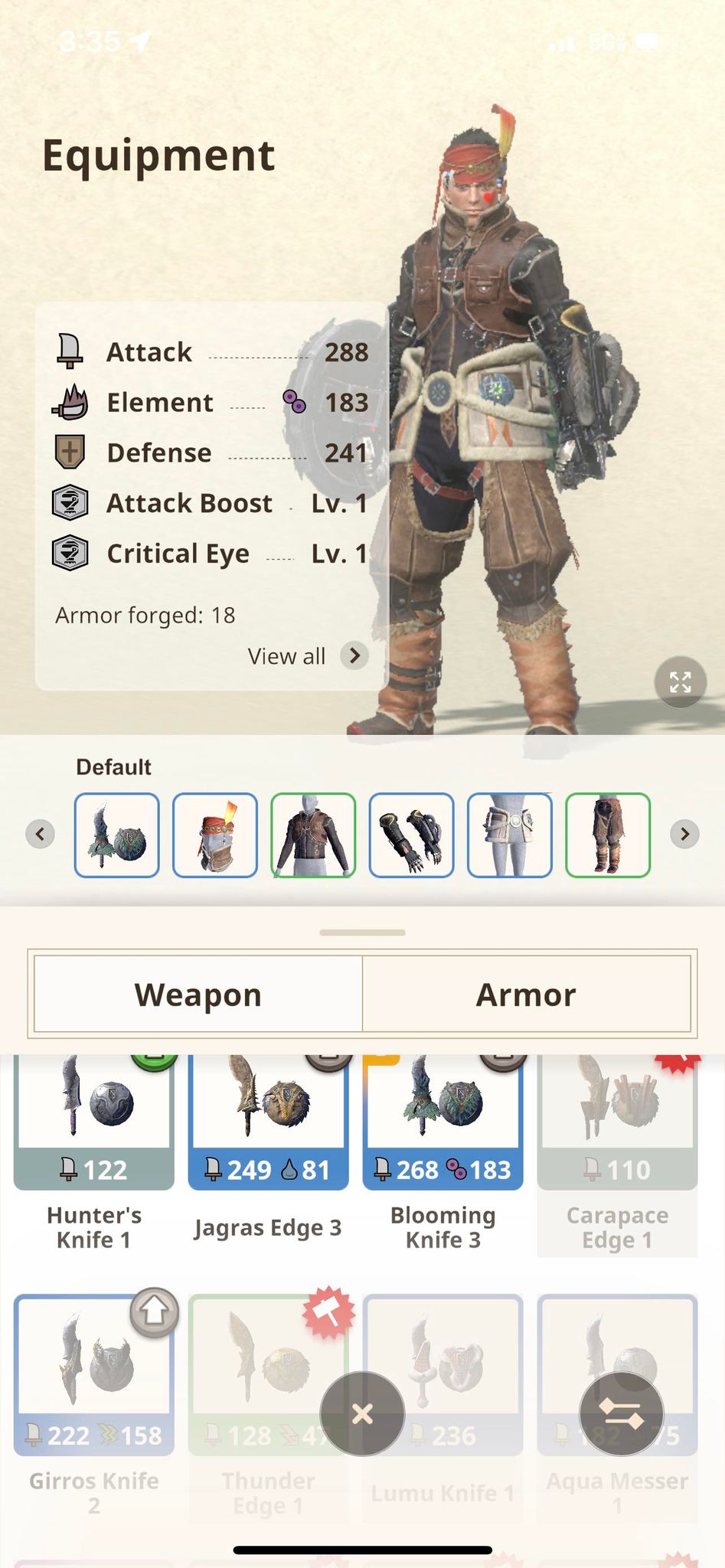
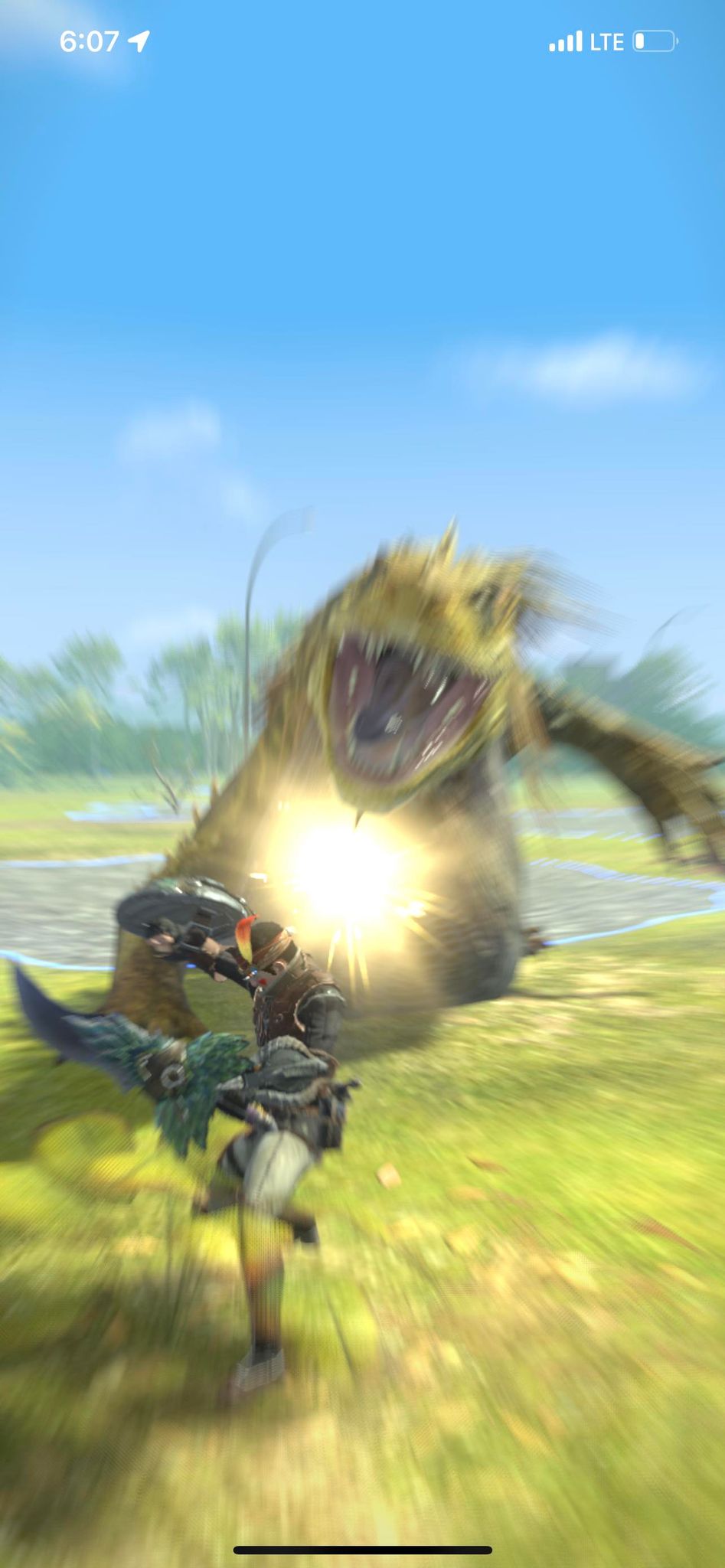
Pro #1: Clearly defined goals
As the title implies, Monster Hunter Now revolves around hunting monsters. Killing monsters drops materials you can use to upgrade equipment, which lets you go out and kill more monsters. It’s a simple, engaging loop that makes the core series so engaging, and Monster Hunter Now captures this well. Crafting and upgrading equipment takes only a few button presses, and everything you’ll need is outlined clearly for you.
It’s incredibly basic, but in the free-to-play mobile space, this is a breath of fresh air. As I played and returned to Pokemon GO over the years, I often found myself drowning in unnecessary mechanics. Am I upgrading a Pokemon with perfect IVs? Do I have enough storage space? Why am I so limited on Stardust? Even outside Niantic’s wheelhouse, mobile games like to throw convoluted systems at you, presumably to confuse you into spending real cash. I typically find myself needing to look up guides for free-to-play games just to figure out what I’m even looking at.
By comparison, Monster Hunter Now might as well be an SNES RPG. Identify the gear you want, craft it, and you’re done. And if you want to clear your story or daily quests, your objectives are always as clear as day. Sure, there’s stuff under the hood that’s confusing. Mechanics like how viable high Affinity is continue to elude friends of mine who are into this game. But as far as micromanagement is concerned, it basically doesn’t exist here. It’s weird to praise a game for not feeling like a second job, but here we are.
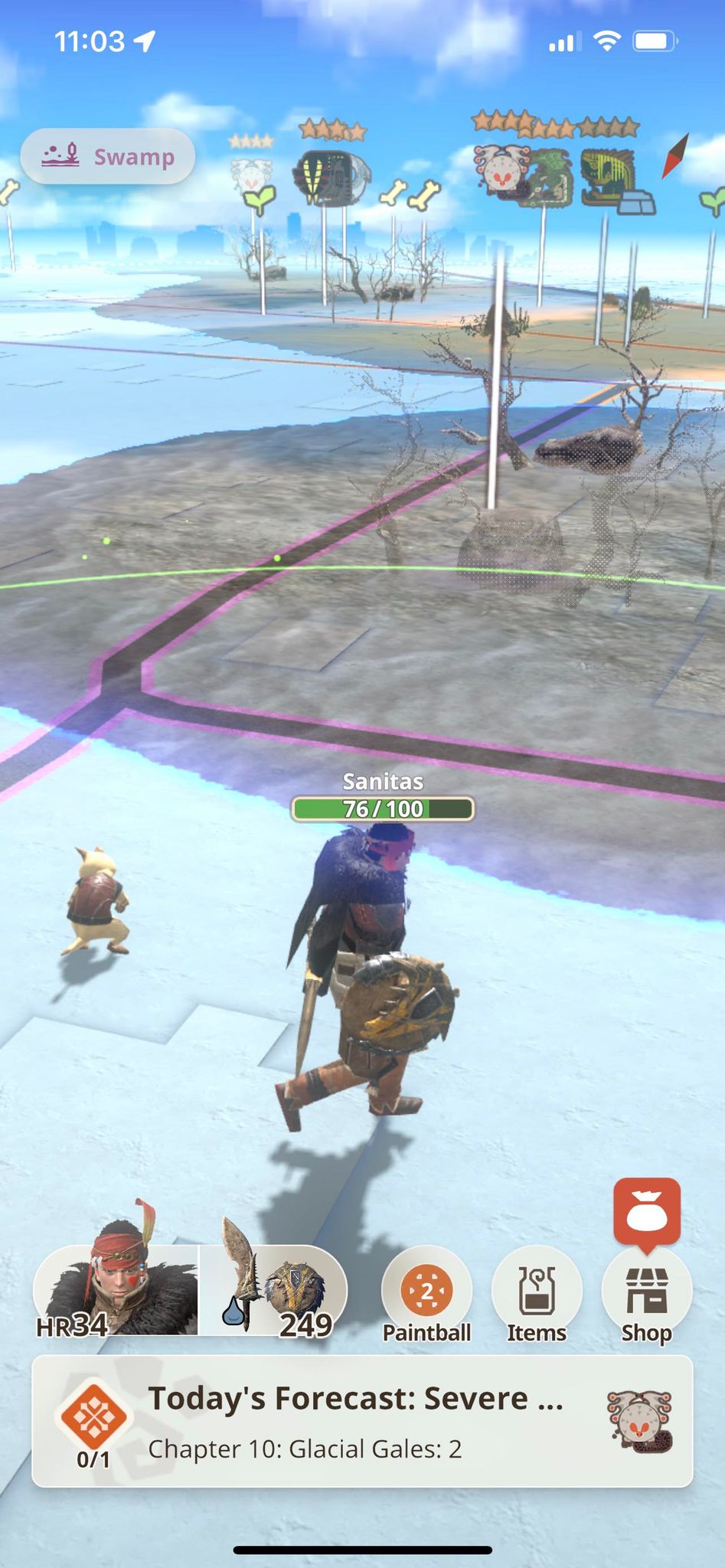
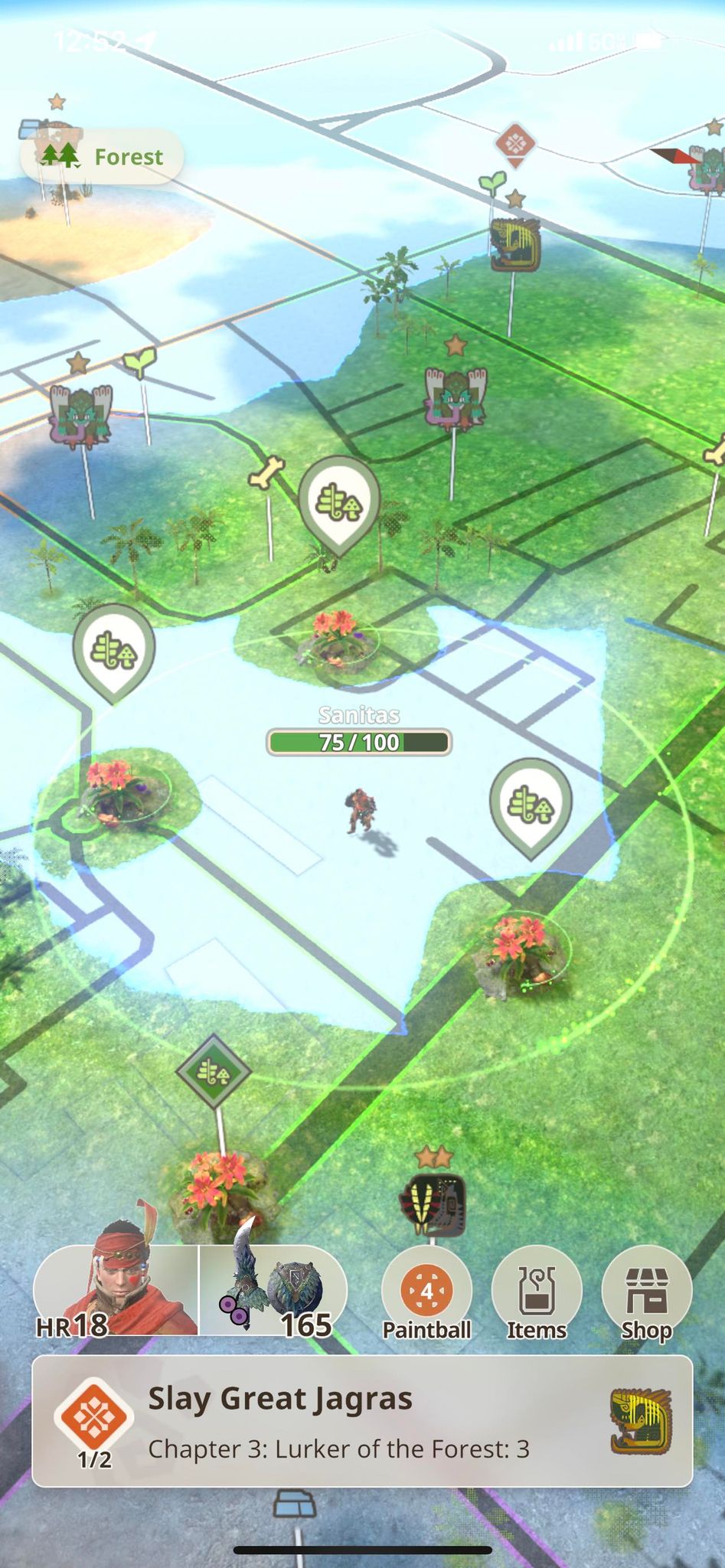
Pro #2: Reasons to explore
Whenever I played Pokemon GO, I had a route I’d always walk. Looping around a nearby park was always optimal since it took me through the most Pokestops and Gyms. And as you might expect, this got kind of boring. My childhood fantasy of a “real-life Pokemon game” involved searching every nook and cranny for rare monsters. And while adult Tim should realize why that isn’t necessarily realistic, it still was kind of disappointing at the height of Pokemon GO-mania. So it’s kind of surreal for me to say that Monster Hunter Now somehow achieves that fantasy more than Pokemon GO did.
As mentioned above, all equipment in the game comes from monster materials. This means crafting the gear you want requires finding specific monsters, which you can find by zooming out to get a bird’s-eye view of your map. Now, I don’t necessarily want to go on my one optimal route. If I need to upgrade my Thunder Edge sword, I need materials dropped by Tobi-Kadachi. So my walking route quickly becomes a quest to hunt those monsters specifically, which changes every day. Sure, the game does have its PokeStop equivalents, but those aren’t the only objectives here.
Additionally, the game splits your real world into random biomes every day, so sometimes quests necessitate exploration as well. If you need to slay five monsters in a swamp, but you’re in a desert, then you’ve got some walking to do. I’ve found myself just wanting to walk just another five or ten minutes because there’s always something I want around the corner. I love this feeling in any game, but getting it in one that encourages me to get some fresh air is genuinely wonderful.
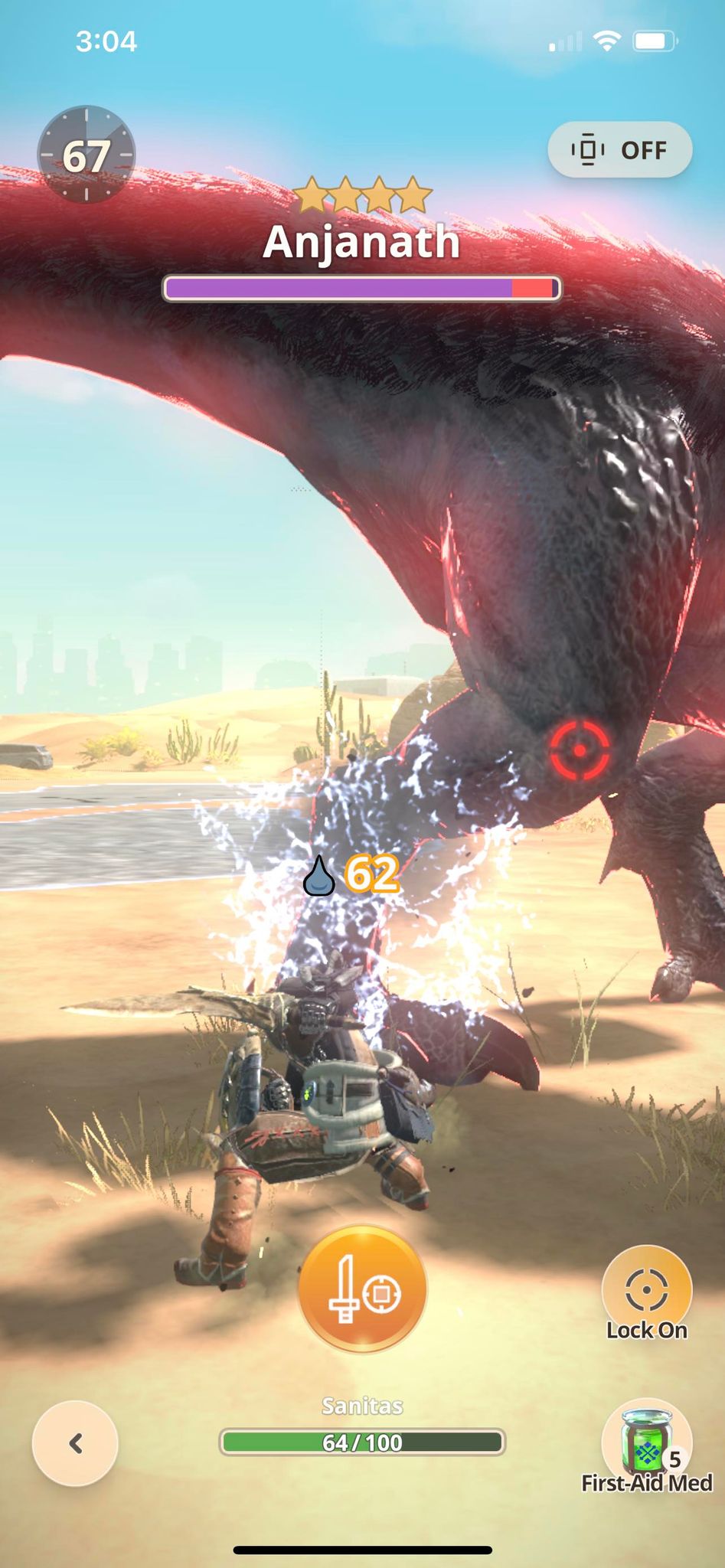
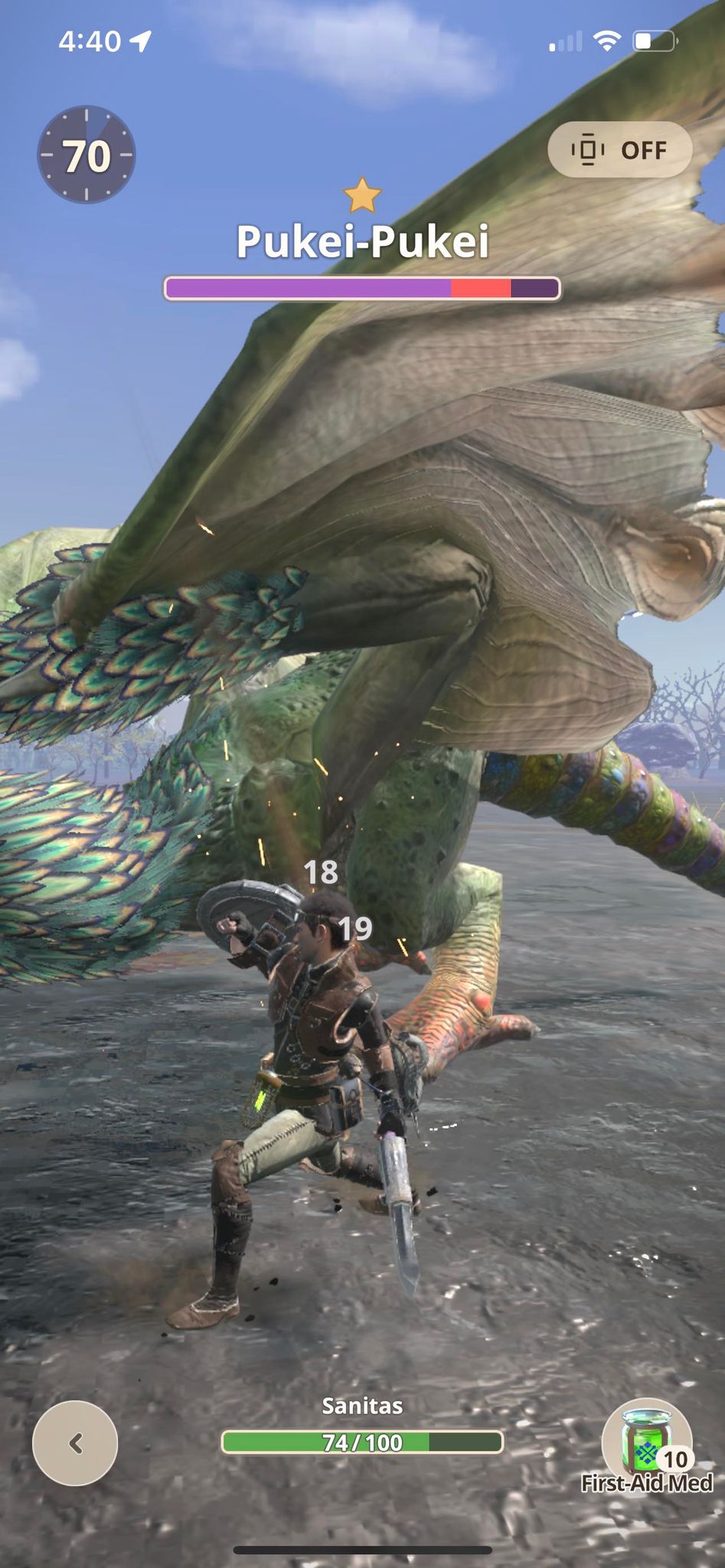
Pro #3: The combat’s actually fun
Of course, none of this would mean anything if it wasn’t fun to, you know, hunt monsters. And as a full disclaimer, if you want that deep Monster Hunter combat, you should stick to the mainline games. But as a portrait-mode interpretation of Monster Hunter based on taps and swipes consolidated into quick skirmishes, it works surprisingly well.
Like the core series, much of Monster Hunter Now’s combat relies on learning boss attack patterns and telegraphs. Swiping the screen lets you dodge in the corresponding direction, and if your timing is just right, you’ll trigger a perfect dodge that lets you execute a powerful counterattack. Holding down on the screen blocks and tapping, of course, attacks. Each of the six weapon types also has a special move you can execute, though as a sword and shield main, I can’t speak to their effectiveness. I do know that the Perfect Rush Combo ability I have gives you a ton of iframes, which I deploy to completely circumvent certain attacks.
Breaking monster parts is still a mechanic here, which has a somewhat multi-faceted approach. Sure, if you attack a monster’s head, you’ll do more damage right off the bat and potentially stun it. However, this will usually put you in a dangerous position, which you could circumvent by targeting its hind legs instead. You only have about a minute and a half to clear each monster encounter, so deploying the right strategy is crucial. Breaking monster parts also yields more drops, so you do need to be deliberate with your strikes too.
Because the game is designed to be played outdoors and in quick bursts, the combat mechanics feel as complex as they should. It’s adapted well to the platform, and if you can organize a group, you can take down monsters with up to three friends as well. I imagine this opens up the potential for team-based strategies, which I’d love to test further in a perfect world. Unfortunately, this focus on team play may, inadvertently, be the thing holding this game back.
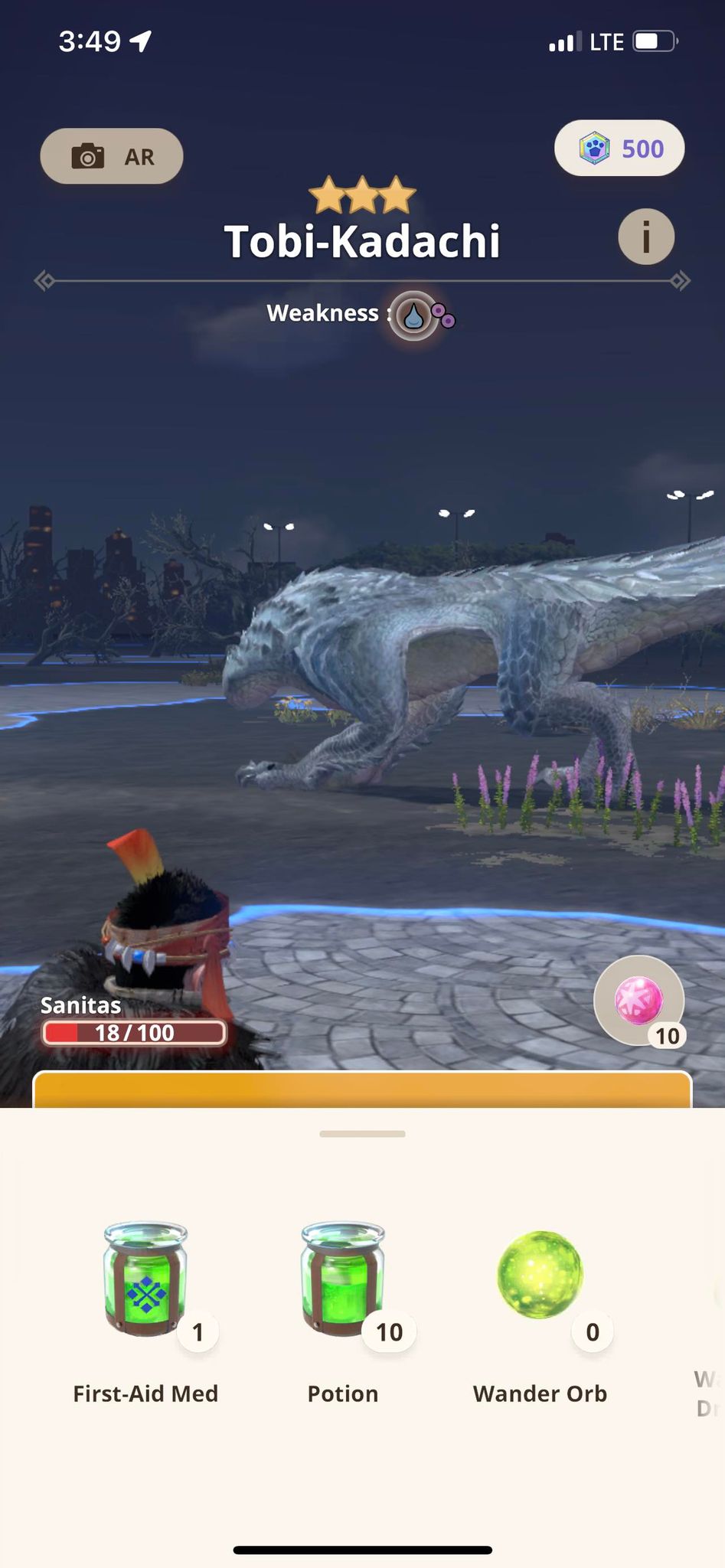
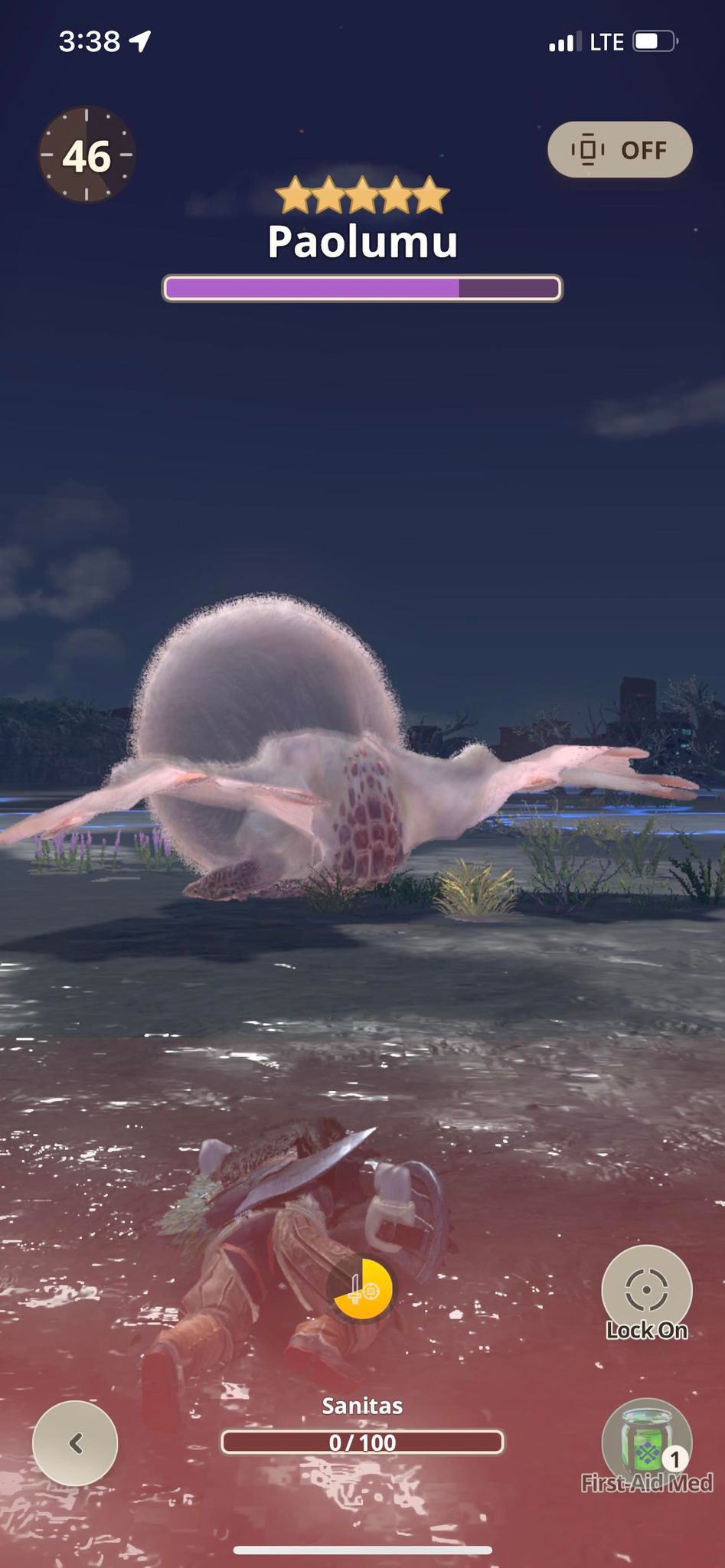
The big con: The wall
So at the start of my Monster Hunter Now adventure, I was having a great time. I was outside for literal hours last Saturday, just chasing down foes and having fun with the gameplay loop. But then, sometime after the point that I unlocked four-star difficulty monsters, my progression really started to slow down.
When facing monsters at this level, attacks that would drain 10% of my health were now hitting me for half my lifebar. Some attacks would one-shot me completely. And to upgrade my armor, I now needed rarer materials that just weren’t dropping, even though I had more common variants in abundance. That rhythm of upgrading gear and taking down monsters slowed down fast, to the point that I’m lucky to squeeze in one armor upgrade a day now. I knew progression would slow down, but Monster Hunter Now does it so abruptly.
Compounding this issue is how healing works in Monster Hunter Now. Every day, you get a stock of five Med-Kit items, with a maximum of ten you can hold. Additionally, you can restore HP by waiting, with about an hour needed to completely heal from 1 HP. But once you’re out of Med-Kits, you’re out of luck as far as instant healing goes. You can no longer heal during fights, and you can’t even initiate encounters without at least 30% of your HP remaining. Of course, you can buy potions… for roughly $2.99 per set of five. Yup, this is where the monetization squeeze comes in.
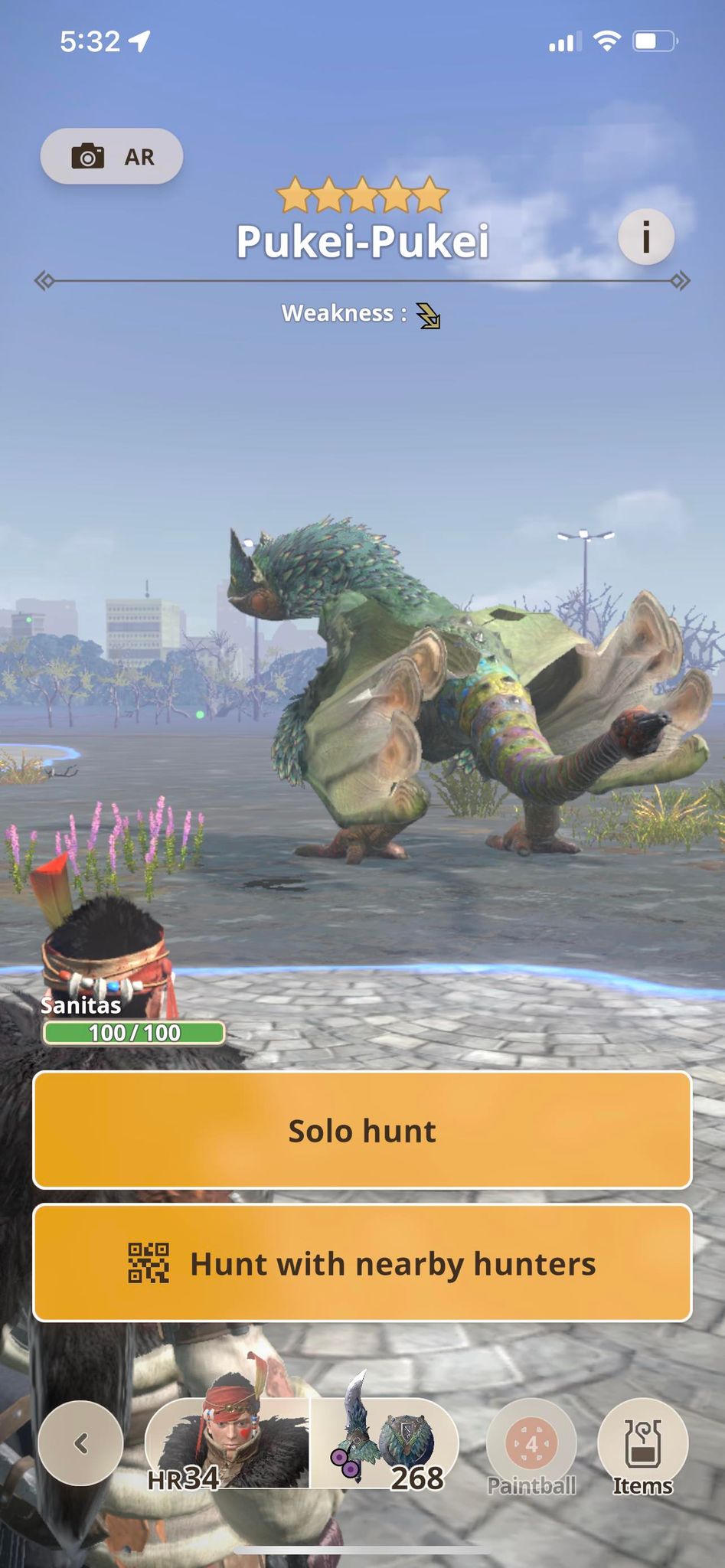
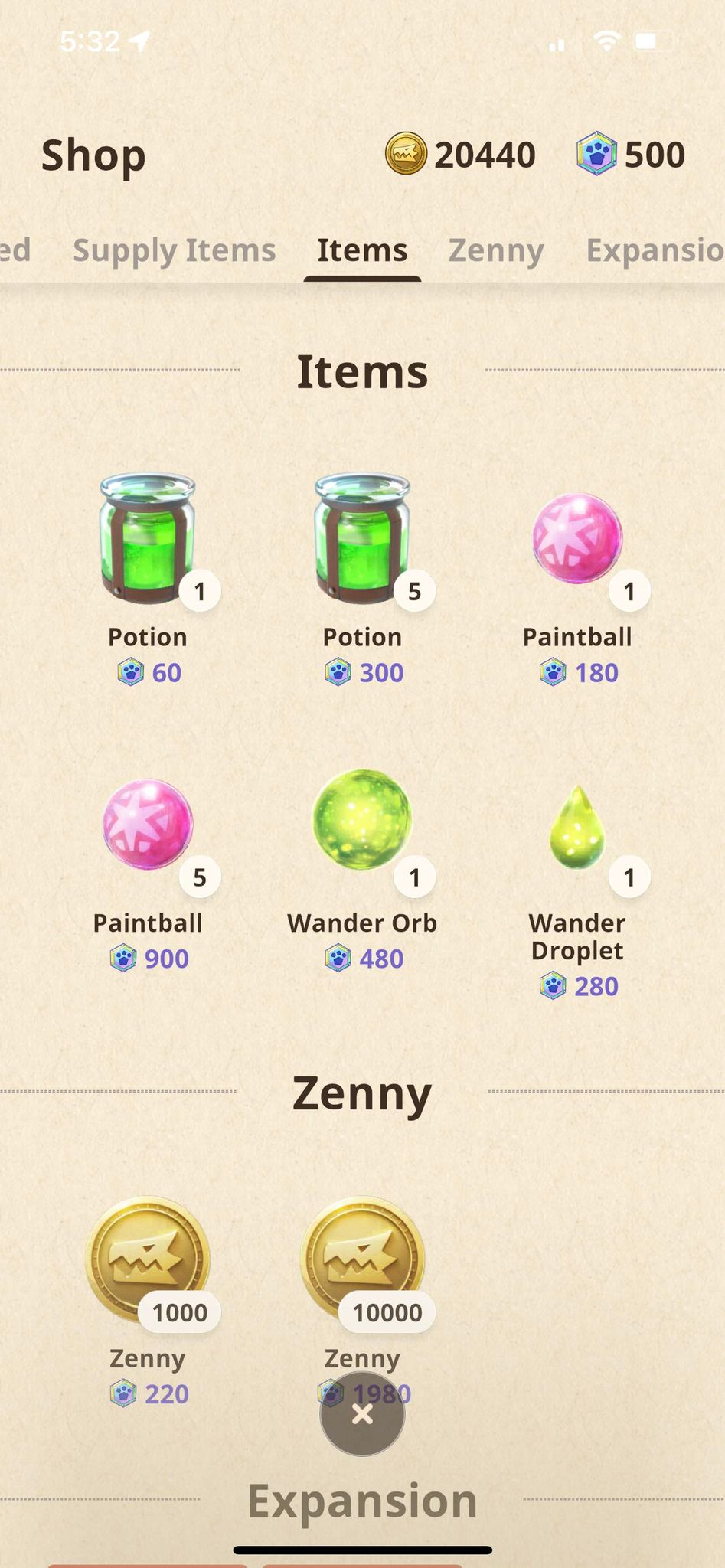
The weird, ineffective monetization squeeze
On one hand, it is sort of funny that playing Monster Hunter Now for free literally devolves into “git gud.” Also, it does encourage a bit of strategy in that you actually want to pick your battles and not indiscriminately fight every monster you see. But, also, this is a game about walking outside and playing on your phone. Realistically, my ability to perfect dodge monsters just isn’t going to be as sharp when I’m out in the sun and standing outside some dude’s house who doesn’t know I’m locked in fierce combat with a slimy dinosaur. Additionally, because of the time limits on each encounter, you can’t just play cautiously either. Unless you have really strong weapons, you’ll need to play aggressively to take foes down.
The game does, technically, have a solution for this. By using paintballs, you can mark a monster that you can then later fight in the comfort of your own home. And given the multiplayer focus of the game, one might assume that you could have some rad multiplayer gaming sessions by stocking up on monster encounters that you and your friends can share later. Except, again, paintballs are strictly a paid commodity. You get a very slight drip feed in-game, but otherwise, the game really expects you to drop about $1.80 for one paintball.
This just really irritates me because paintballs are strictly quality of life. They don’t help your progression in any way, they just make fighting monsters more convenient. Literally anyone I know in real life interested in playing this game with me likes the idea of progression by walking but not so much being locked in combat ten feet from a major road. I get that there’s something to be said about the social experience of meeting a fellow Monster Hunter. But at the moment, paywalled paintballs make the game less social for me, which is a bummer.
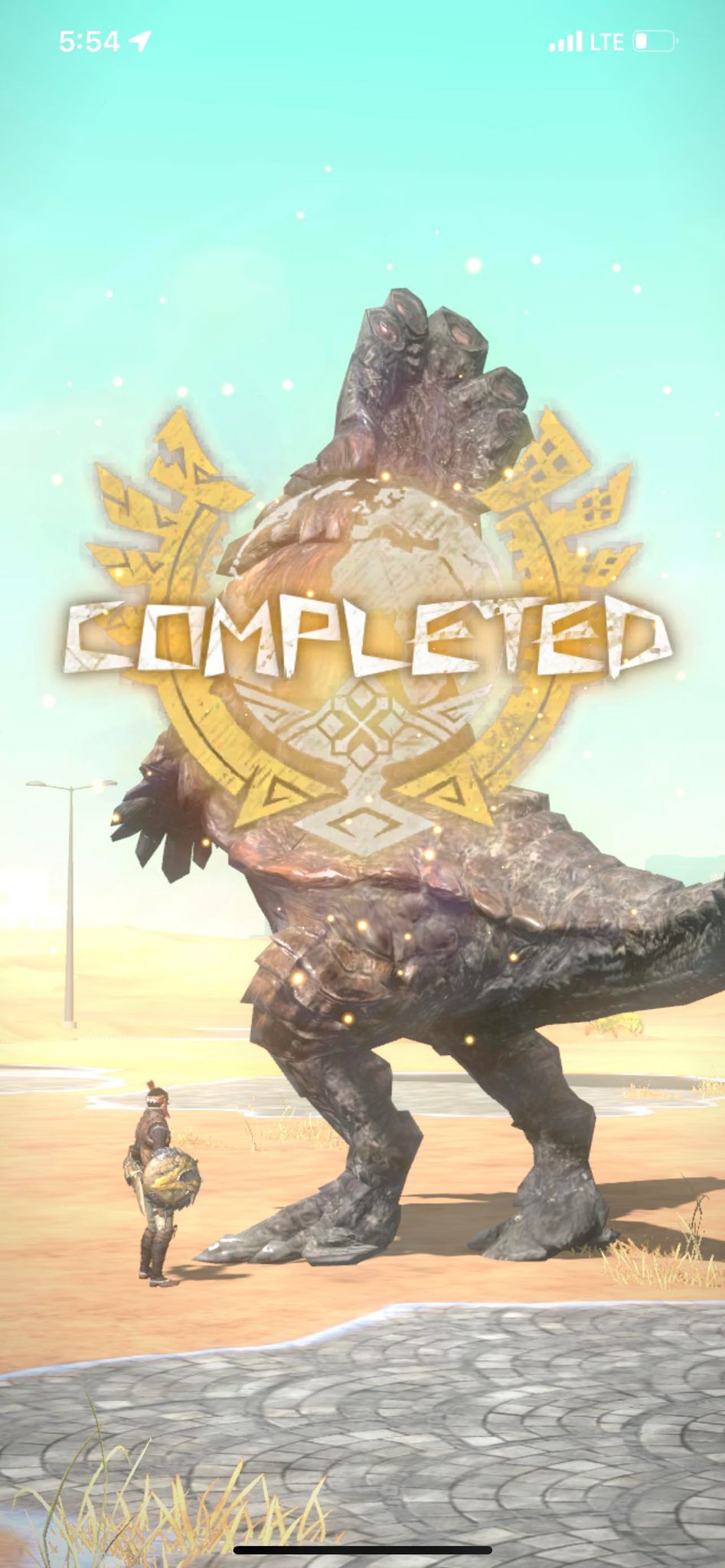
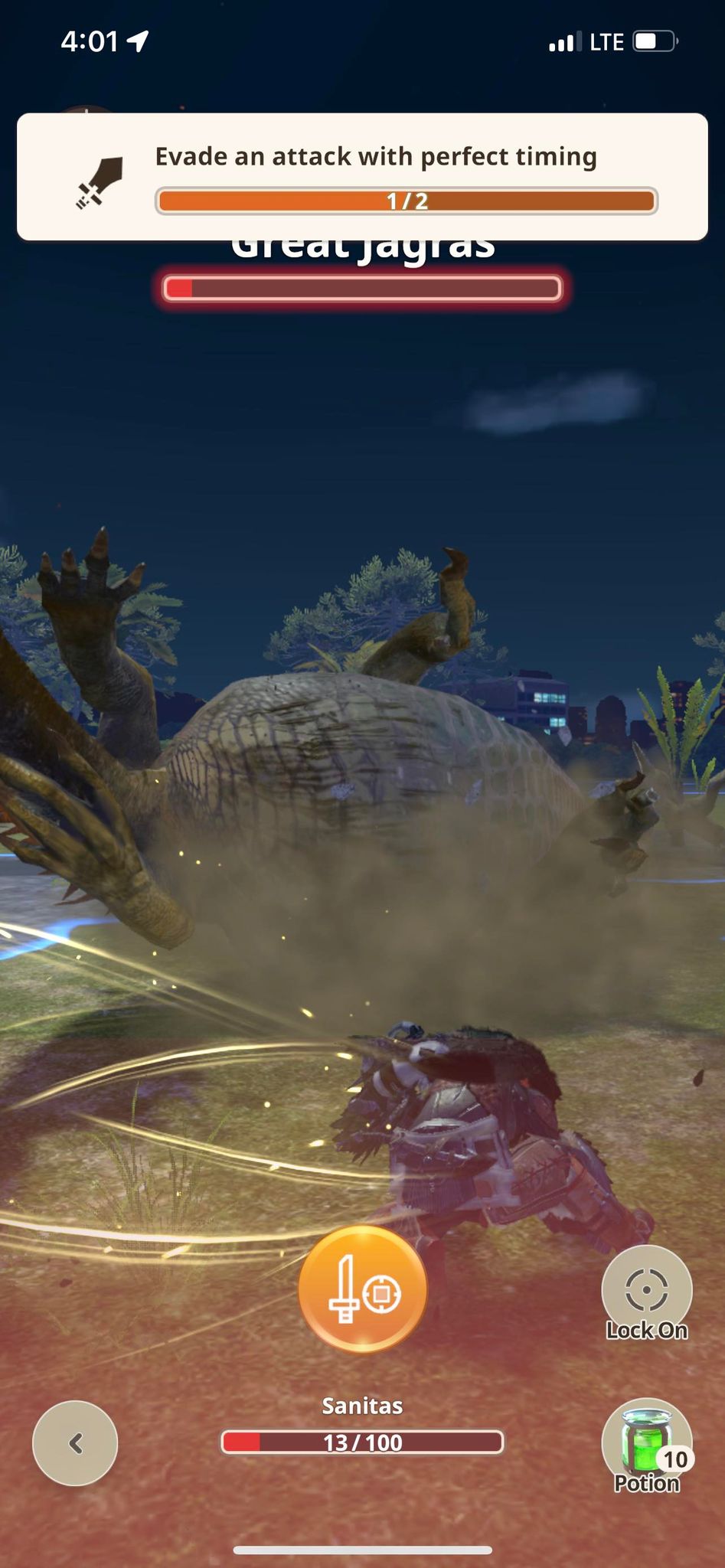
A couple slips don’t ruin it for me
Though the above points bother me, they aren’t quite enough to kill the game for me yet. Even with the roadblocks, I still enjoy hunting down monsters and collecting materials. And honestly, the monetization is so utterly weird that I don’t even know if this wall is by design. Maybe the game was just balanced around groups of four, or the wall is just obscuring the game’s relative lack of content. I can’t tell just yet.
Either way, I hope it’s something that Niantic can address in one way or another. Because, at its core, I like the foundation Monster Hunter Now lays. It’s casual enough for when I’m in my dentist’s waiting room yet engaging enough that I don’t feel like I’m wasting my time. It actually, weirdly, reminds me a bit of games like Dragalia Lost and Star Ocean: Anamnesis, two mobile games I really enjoyed before they were hit by the End of Service curse. I’d like to think Monster Hunter Now will avoid a similar fate. But unfortunately, nothing is certain for live service games.
Still, to me, Monster Hunter Now is less about the raw progression and more about exploring the world around me. It’s been amazing to see places just a few minutes away that I never even knew were there or check out a monument I haven’t bothered to look at in literal years. So even if Monster Hunter Now never gets better, or it suffers an unfortunate shutdown, I’ll be happy with the time I’ve spent with it. That said, I hope this one can stick around for a while yet. Monster Hunter Now is the game I’ve wanted to play since I first touched Pokemon GO, and it’s a strong contender to be my next mobile main game. I just hope the real monster isn’t some malicious code trying to get me to open my wallet.













Published: Oct 6, 2023 05:19 pm